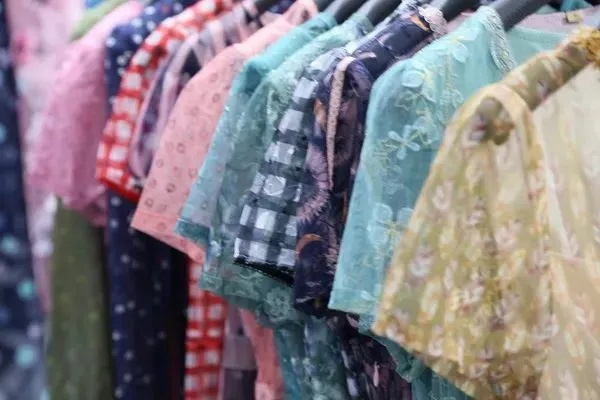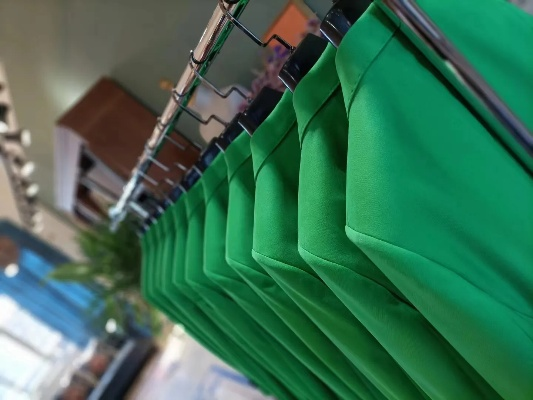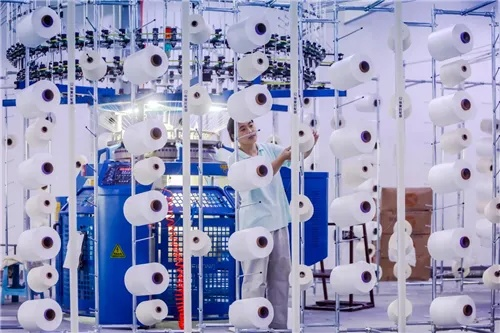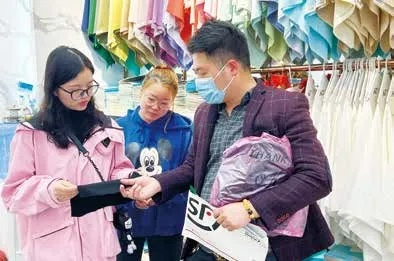The Role of Textile Testing in Quality Control in Fujian Province
In the textile industry, quality control is crucial for ensuring product reliability and consumer satisfaction. Fujian Province, as one of China's leading textile-producing regions, places a high value on testing to ensure product quality. Textile testing plays a significant role in quality control by providing data on fabric strength, color accuracy, and other important properties. These tests help manufacturers identify potential issues early on, allowing them to make necessary adjustments before production. Additionally, they provide valuable information for consumers about the quality of the products they purchase. Overall, textile testing is an essential component of quality control in Fujian Province, contributing to the region's reputation for producing high-quality textiles.
Introduction: In the vibrant textile industry of Fujian province, where traditional craftsmanship and modern technology coexist, ensuring product quality is crucial. Textile testing methods play a vital role in this process, providing assurance that products meet standards and consumer expectations. In this article, we will delve into the various testing methods used in Fujian to ensure textile products are safe, durable, and consistent with international standards. We'll also share some case studies to illustrate how these methods have been instrumental in maintaining high-quality textiles.
Textile Testing Methods in Fujian:
-
Material Testing: This involves inspecting the raw materials used in manufacturing textiles for any defects or impurities. For example, colorfastness tests check whether colors fade or change under different conditions (like washing, sunlight exposure, etc.) while strength tests measure the fabric's resistance to tearing or breaking.
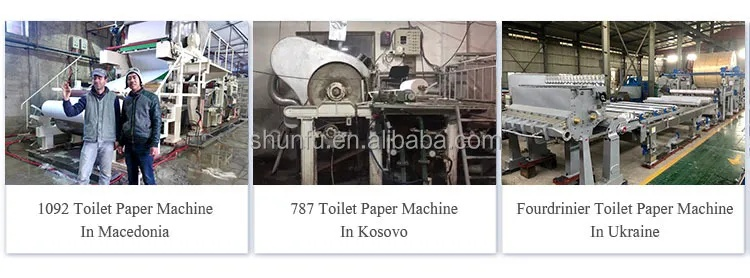
-
Process Testing: This includes evaluating the manufacturing process from start to finish, such as dyeing, weaving, knitting, and finishing. These tests aim to ensure uniformity and consistency in the final product.
-
Finish Testing: This step involves checking the surface condition of the textile, including its smoothness, gloss, and overall appearance. It also includes tests for stain resistance, water repellence, and other properties that affect the product's functionality and durability.
-
Packaging Testing: This ensures that the packaging meets safety standards and protects the textile during transportation. It may include tests for moisture resistance, temperature stability, and shock resistance.
-
Environmental Testing: As part of the global trend towards sustainability, environmental testing has become increasingly important. Fujian textile companies must comply with regulations like the European Ecolabel System (Ecolabel), which assesses products' environmental impact before they reach consumers.
-
Consumer Product Safety Testing: To ensure the safety of end-users, many textile products undergo rigorous testing for toxic substances and pollutants. For instance, textiles containing harmful chemicals like formaldehyde or lead are strictly monitored for compliance with the International Organization for Standardization (ISO) standards.
Case Study: One notable example of how these testing methods contribute to high-quality textiles is the "Fujian Bamboo Shirt" brand. Founded in 2015, the company specializes in producing eco-friendly bamboo clothing using sustainable practices. They adhere to strict quality control measures throughout the production process, from selecting high-quality bamboo fibers to implementing advanced finishing techniques to enhance the shirt's softness, breathability, and durability.
To maintain these standards, the brand conducts regular material testing to ensure that all bamboo fibers meet the required specifications. Additionally, they regularly perform process testing to ensure uniformity in their manufacturing processes. The finished products undergo detailed finish testing, including scratch and stain resistance tests, to ensure they meet consumer expectations.
Moreover, the brand is committed to environmental testing by following ISO certification requirements and regularly auditing their facilities for compliance. Their commitment to consumer safety is evident in the fact that all their products undergo rigorous testing for toxic substances and pollutants, ensuring they are safe for long-term use.
Conclusion: The textile testing methods used in Fujian not only help maintain the quality of local textile products but also contribute to the overall health and safety of consumers. By adopting these stringent testing protocols, manufacturers can build trust with customers and secure their place in the competitive market. As the demand for high-quality textiles continues to grow, it's clear that the importance of testing cannot be overstated.
福建作为我国的重要纺织产业基地,其纺织品的质量和检测方法备受关注,本篇将详细介绍福建纺织品检测的方法,并结合实际案例进行说明。
福建纺织品检测方法概述
检测标准与流程
福建纺织品检测主要依据国家相关标准和行业标准进行,包括纤维含量检测、化学成分分析、耐久性测试等,检测流程包括样品采集、预处理、测试分析等环节。
检测设备与试剂
福建纺织品检测主要依赖各种先进的检测设备,如纤维含量测定仪、化学成分分析仪、耐久性测试机等,需要使用各种专用试剂和标准溶液进行测试。
案例分析

某品牌纺织品检测过程
某品牌纺织品在福建进行检测,首先采集样品并进行预处理,然后使用纤维含量测定仪对纤维含量进行检测,同时进行化学成分分析,以确定纺织品的材质和成分,最后进行耐久性测试,确保纺织品在长期使用中的性能稳定,整个过程严格按照国家相关标准和行业标准进行,确保纺织品的质量和安全。
纺织品检测中遇到的问题及解决方案
在纺织品检测过程中,可能会遇到一些问题,如样品不均匀、测试结果不准确等,针对这些问题,福建的纺织品检测机构采取了以下解决方案:加强样品采集和预处理的规范性,使用专业设备进行测试分析,同时加强实验室管理,确保测试结果的准确性和可靠性。
具体检测方法与步骤
纤维含量检测
使用纤维含量测定仪对样品进行纤维含量测定,根据样品纤维类型和含量确定纺织品的材质和性能。
化学成分分析
使用化学成分分析仪对样品进行化学成分分析,确定纺织品的化学成分和含量,同时根据化学成分分析结果,评估纺织品的环保性能和安全性。
耐久性测试
对纺织品进行耐久性测试,包括拉伸性能测试、耐磨性能测试、抗紫外线性能测试等,根据测试结果评估纺织品的耐久性和使用寿命。
英文表格补充说明
以下是关于福建纺织品检测方法的英文表格补充说明:
福建纺织品检测标准与流程表
| 项目 | 检测标准与流程 | 设备与试剂 |
|---|---|---|
| 纤维含量检测 | 国家相关标准和行业标准 | 纤维含量测定仪、专用试剂 |
| 化学成分分析 | 根据样品材质和成分确定 | 化学成分分析仪 |
| 耐久性测试 | 根据样品性能进行耐久性测试 | 专业设备、标准溶液等 |
福建作为我国的重要纺织产业基地,其纺织品的质量和检测方法得到了广泛关注,本文介绍了福建纺织品检测的方法和案例分析,同时提供了详细的英文表格补充说明,希望能够帮助大家更好地了解福建纺织品检测的方法和流程,为保障纺织品的质量和安全提供有力支持。
Articles related to the knowledge points of this article:
The Nature of Textiles:An Introduction to Their Classification and Application
The Magic of Clothing and Textiles
The Warning Sign of Textile Flame
